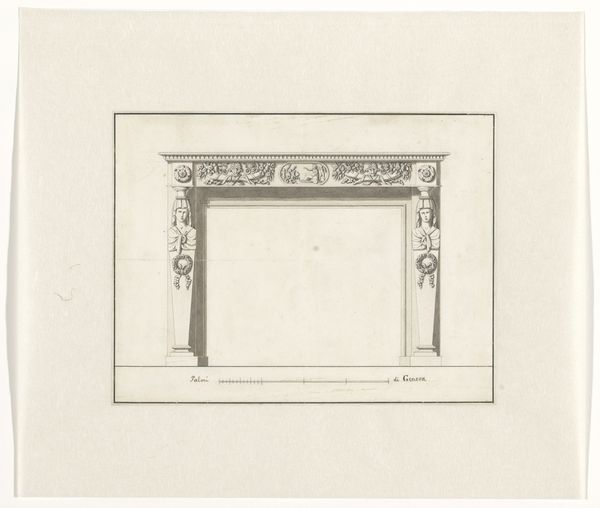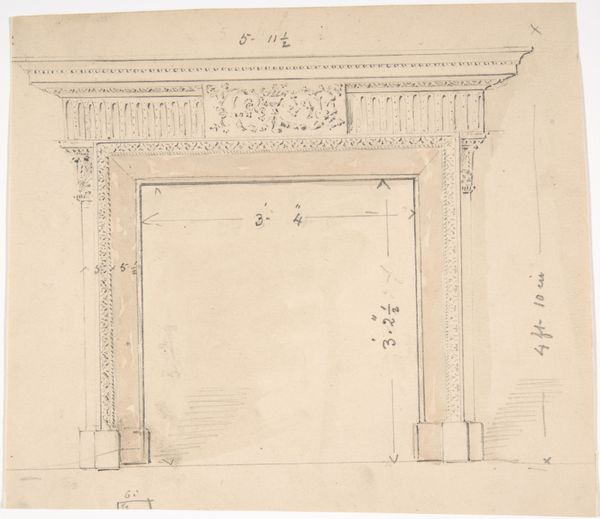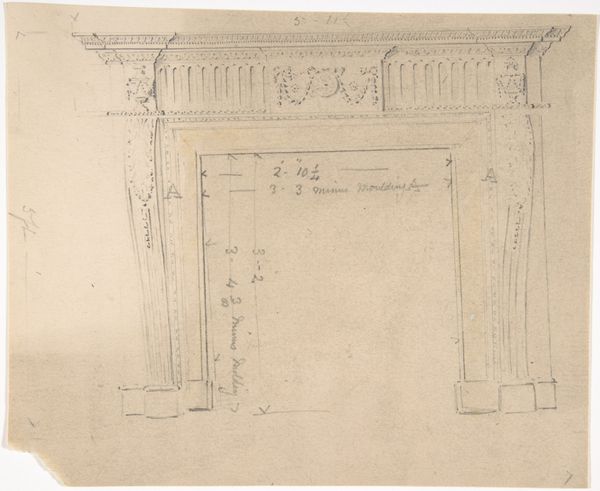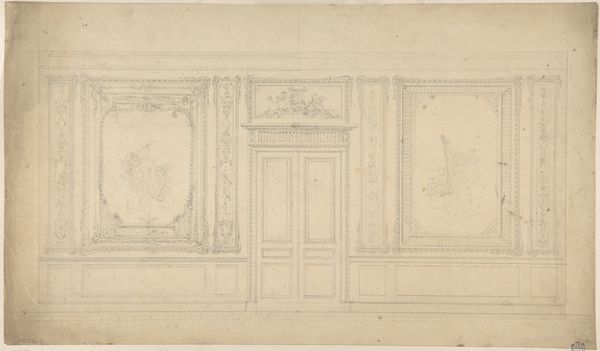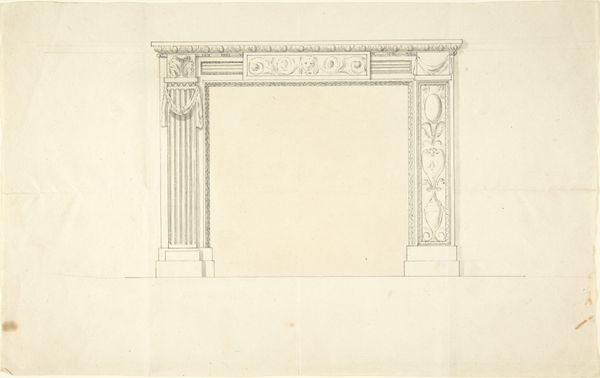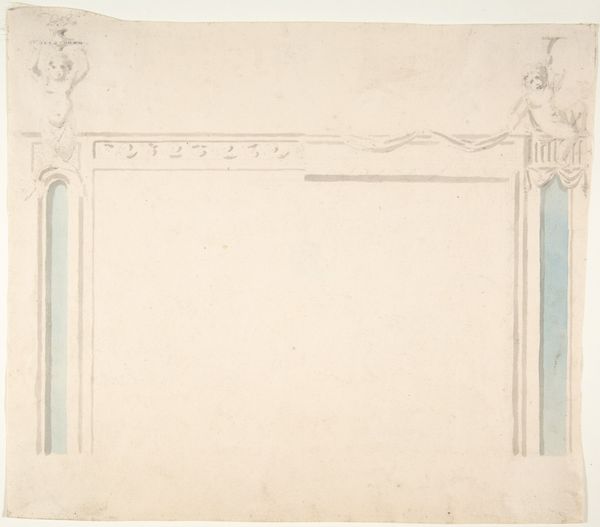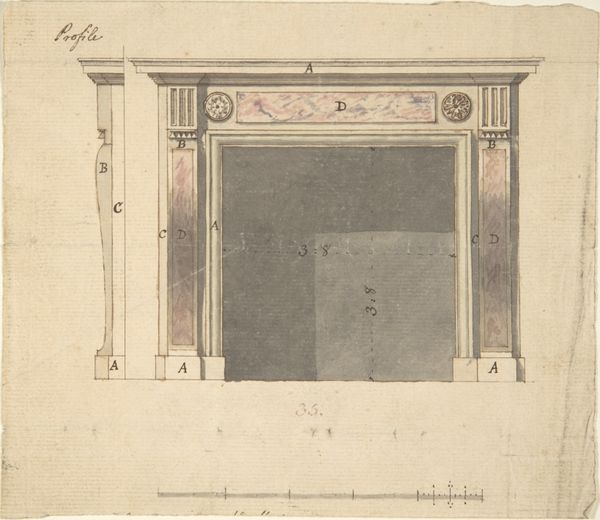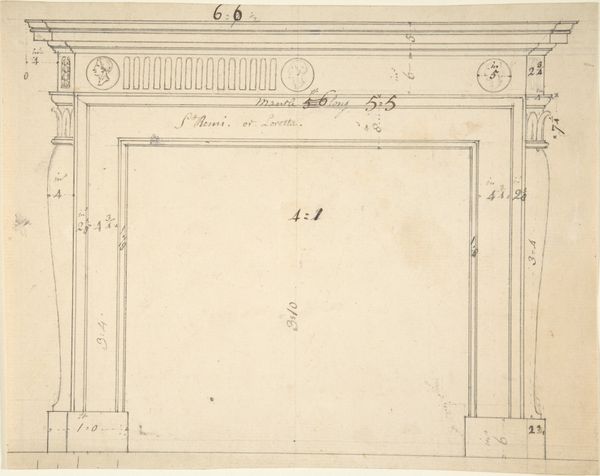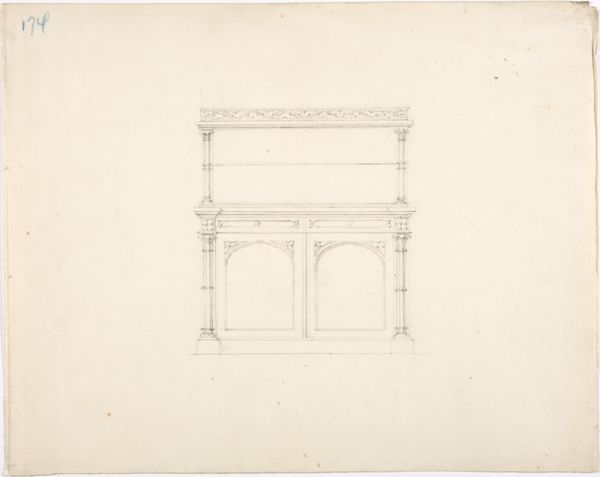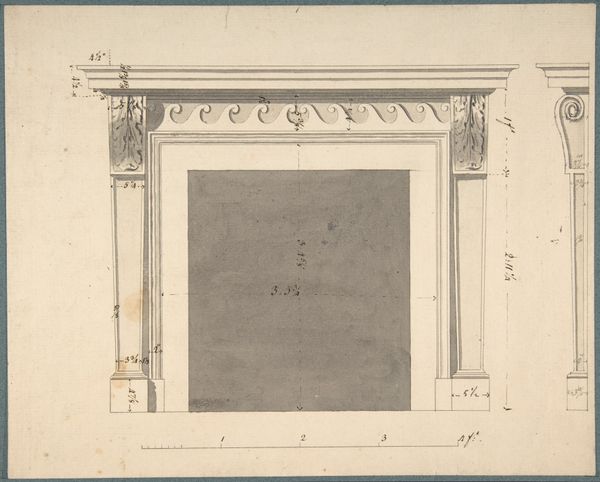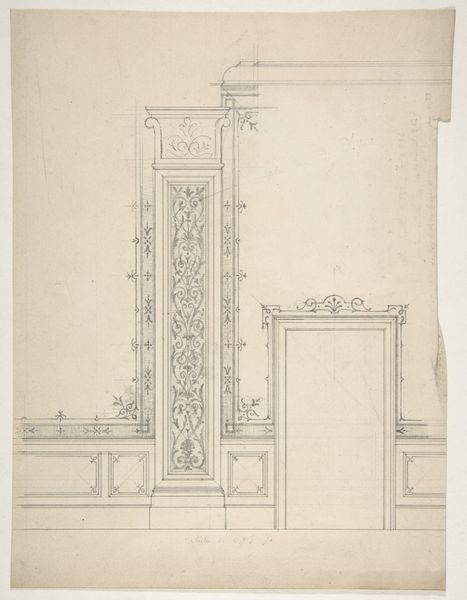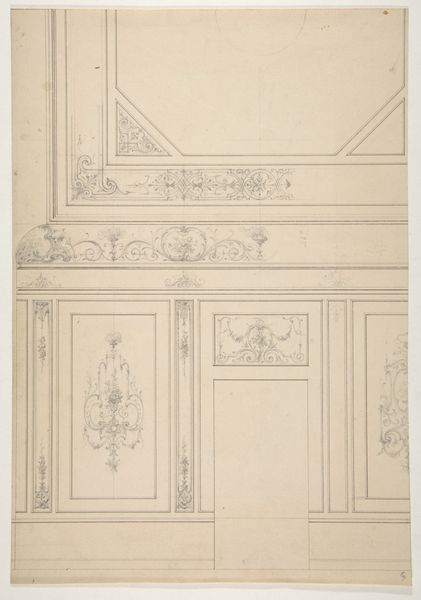
drawing, print, architecture
#
drawing
#
neoclacissism
# print
#
geometric
#
line
#
architecture
Copyright: Public Domain
Editor: So, we’re looking at “Design for a Chimneypiece,” a drawing, likely a print, by Sir William Chambers, created sometime between 1740 and 1800. It's surprisingly austere. What symbols do you see at play in this design? Curator: This chimneypiece speaks volumes about the era's fascination with classical antiquity. The symmetry, the geometric forms... everything points to Neoclassicism's desire to evoke a sense of order, reason, and imperial authority. What about the floral details – the garland, the overflowing urn? How do those modify our understanding of its iconography? Editor: I guess they soften the austerity a bit, hinting at prosperity and abundance within this ordered space? A contrast, maybe? Curator: Precisely! Consider the hearth as the heart of the home, and these details act almost as a visual prayer for the continued flourishing of the household. Remember that fireplaces weren’t just functional; they were status symbols. Editor: Right, warmth and status. So, the imagery works on multiple levels – the classical allusions speak to intellect and power, while the floral elements represent domestic well-being. Are there precedents for the use of symmetry and classical images like these? Curator: Absolutely. The Renaissance rediscovered classical forms, but Neoclassicism doubled down on that revival, aligning it with Enlightenment ideals of rationality. Architects like Chambers looked to ancient Greece and Rome for inspiration, seeking to create spaces that were both beautiful and morally uplifting. Editor: It’s amazing how much information can be embedded in something seemingly so simple. I never thought of floral design elements in prayerful tones, such as asking for continued health and stability of a home. I definitely learned new things! Curator: It is fascinating how symbols continue to tell stories, evolving with new layers of meaning over time.
Comments
No comments
Be the first to comment and join the conversation on the ultimate creative platform.
